News
Reforestation and biodiversity gain ground with ecological restoration at MLR Forestal
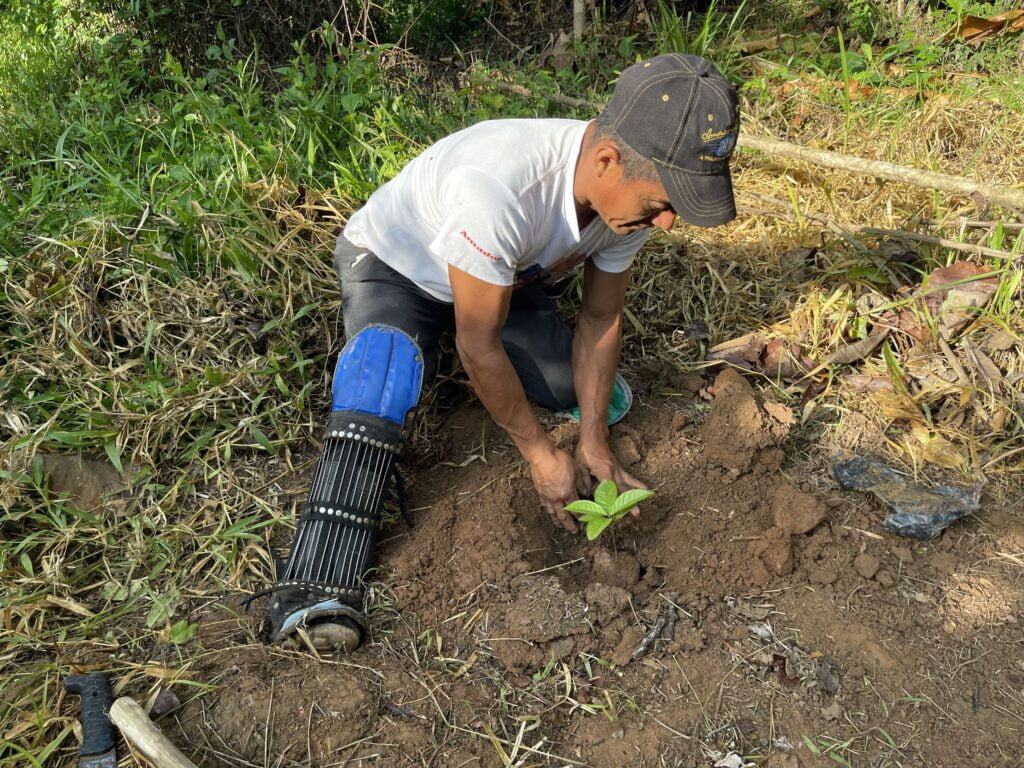
After a year, the numbers speak for themselves. In 13 months, 121 hectares have been reforested, which are part of the conservation areas on the farms: Santa Fe, San Miguel and Las Delicias; with a total of 4,348 native plants of 13 species planted.
100% of the seeds from which these plants were collected on the company’s properties and germination was carried out in the nursery of MLR Forestal.
Ecological restoration is a ten-year project through which MLR Forestal will carry out strategic actions to accelerate the process of regeneration of its conservation areas. The plan is to reforest at a rate of 55 hectares per year.
In this plan, practically all areas of the company are involved In the last twelve months, 278 field workers have participated in the work of preparing the land, weeding, pitting and planting.
This morning in late August, a five-man crew prepares to reforest on the Matiz farm. In this farm of 487 hectares of extension, there are 146 hectares destined to conservation, and within these there are 67 hectares declared Private Wildlife Reserve in September 2022. In Matiz, the company will reforest 40.75 hectares.
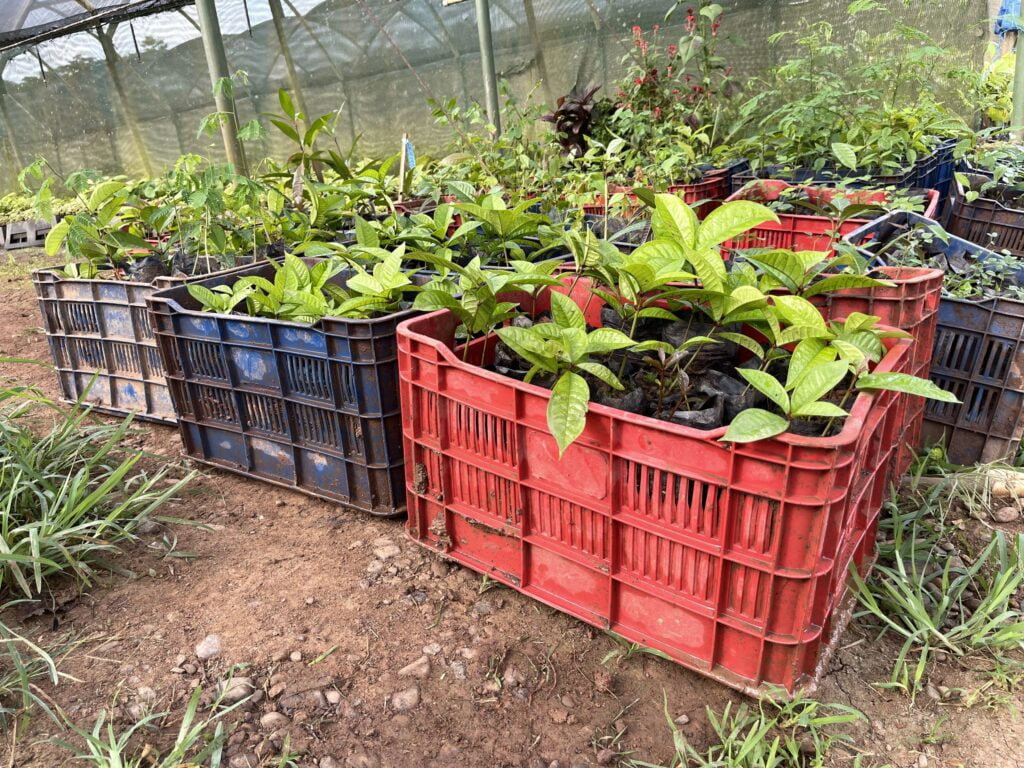
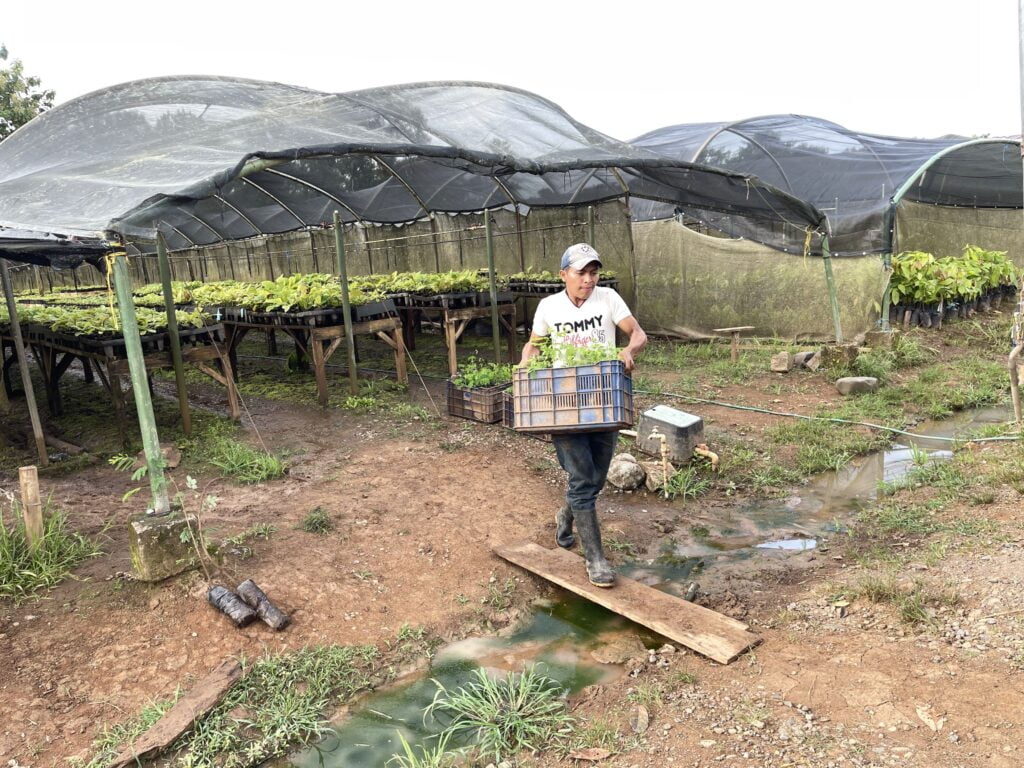
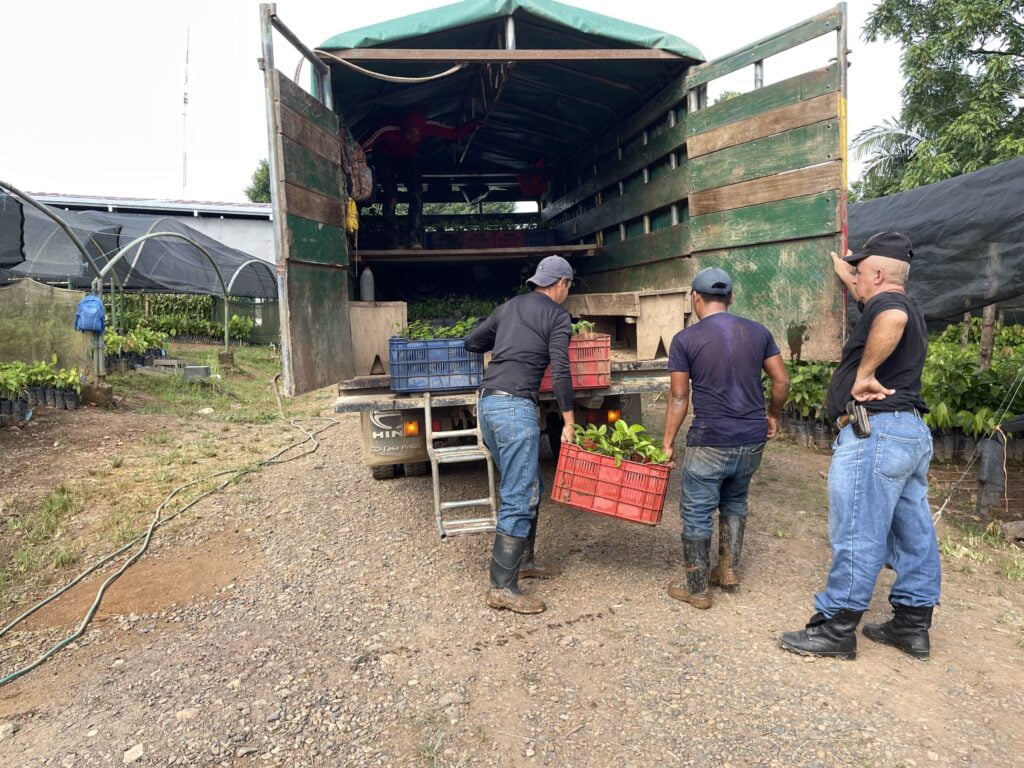
“Biodiversity is increasing, ecological restoration has a positive impact”
Róger Mendieta, responsible for Biodiversity at MLR Forestal, is in charge of ecological restoration. Before the crew begins its tasks, Mendieta gives a brief informative talk regarding the program and its importance for biodiversity.
“The objective of this project is not only to reforest but to create the conditions for biodiversity to have an environment that provides protection and food. That is why we not only seek to plant timber plants, but also fruit trees such as jocote jobo, water pear, mango, avocado mountain, “says Mendieta. The idea is that in the future the trees will serve as hosts, shade and food for fauna.
The expert points out that the results of a year of restoration are already visible. “When monitoring protected areas, new species are almost always added to wildlife listings. Mainly birds, amphibians, reptiles and mammals are the groups that have shown change. We are also working with fungi and orchids because biodiversity is increasing, so the project has a positive impact,” he says.
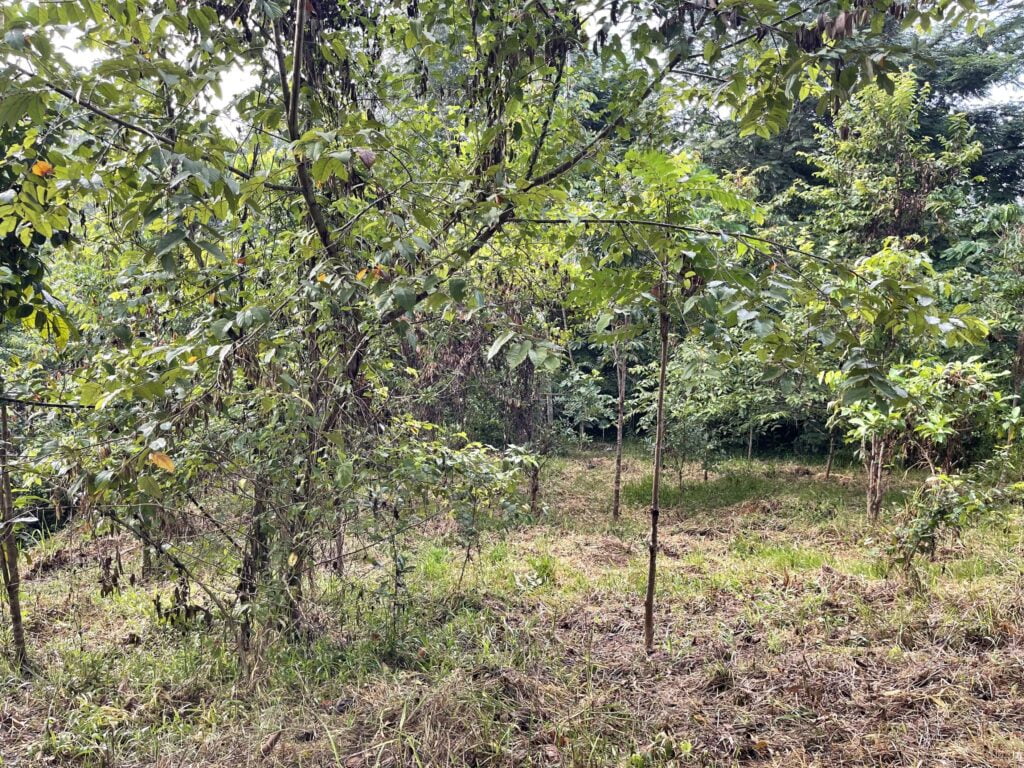
The next step: three-year follow-up to reforestation
What will be done after planting the trees is to maintain for three consecutive years. This includes, in Mendieta’s words, cleaning the sites where it was planted, making calculations of mortality rates and creating the replanting plan so that the project is maintained at 100%. Three months after planting, the process begins and every three months the monitoring will be done.
With this monitoring it will also be observed that the new ecological community emerged thanks to reforestation is already providing the expected environmental services such as soil retention against erosion, increased water infiltration into the subsoil, permanence of surface water and temperature regulation.
Share




